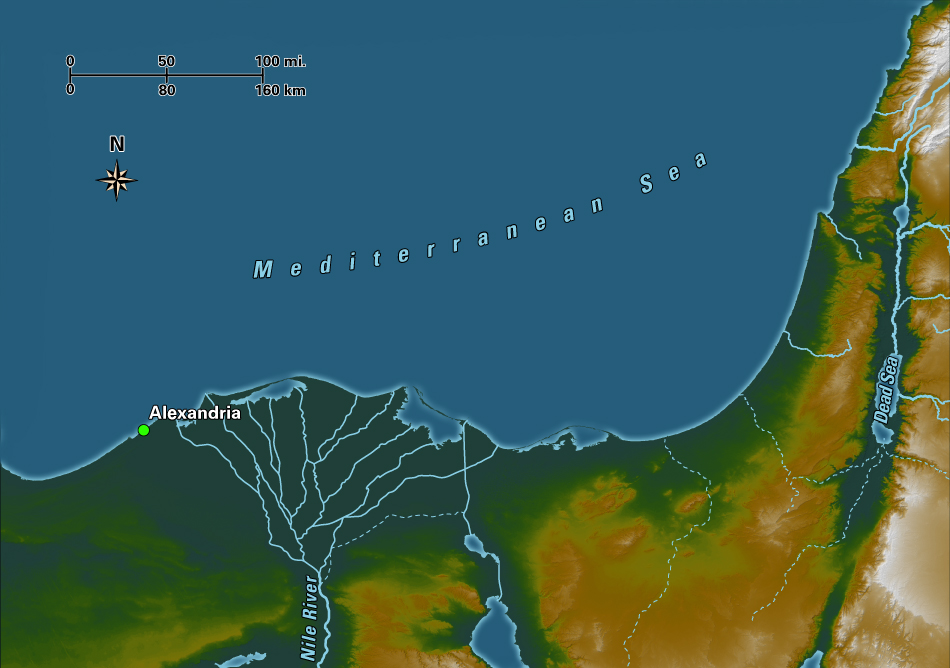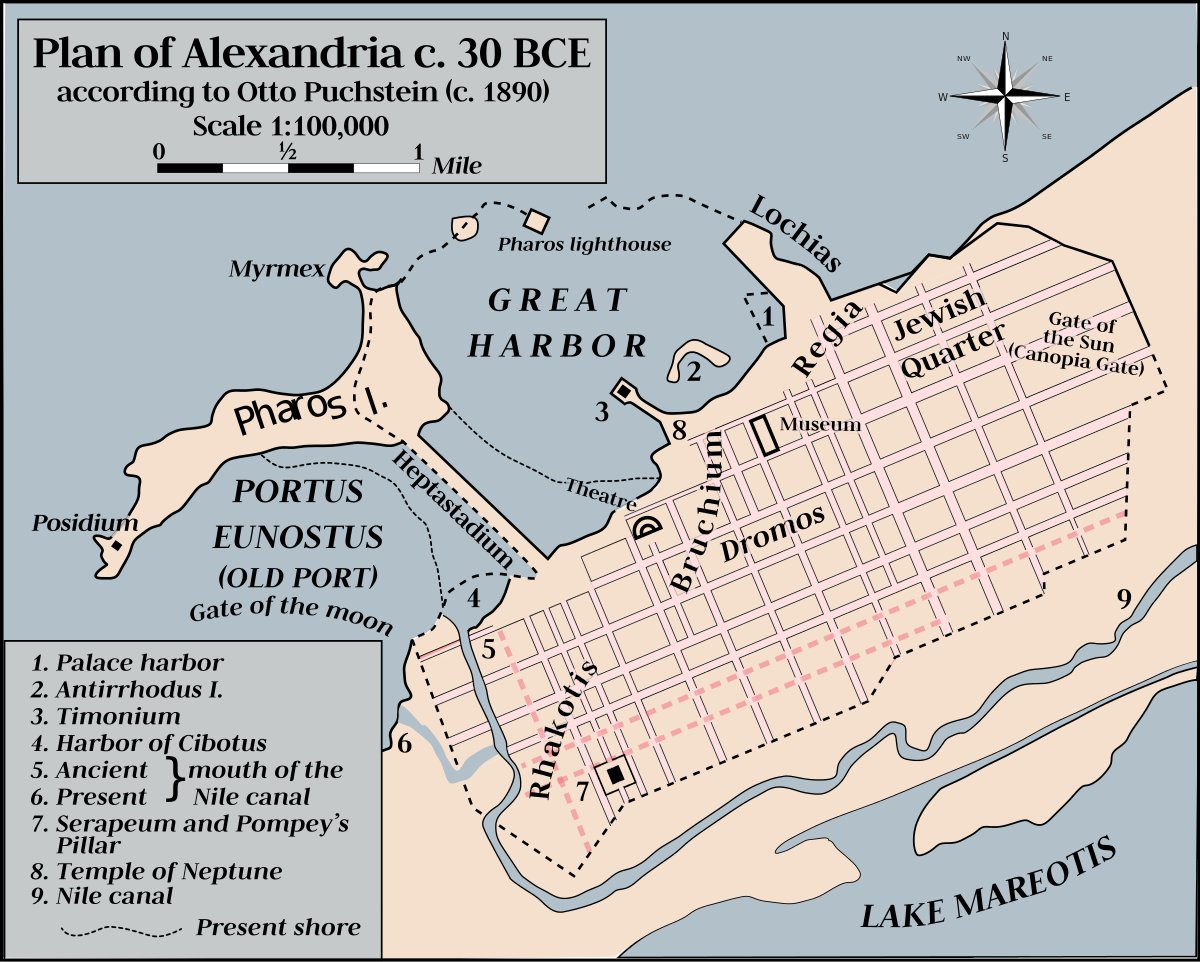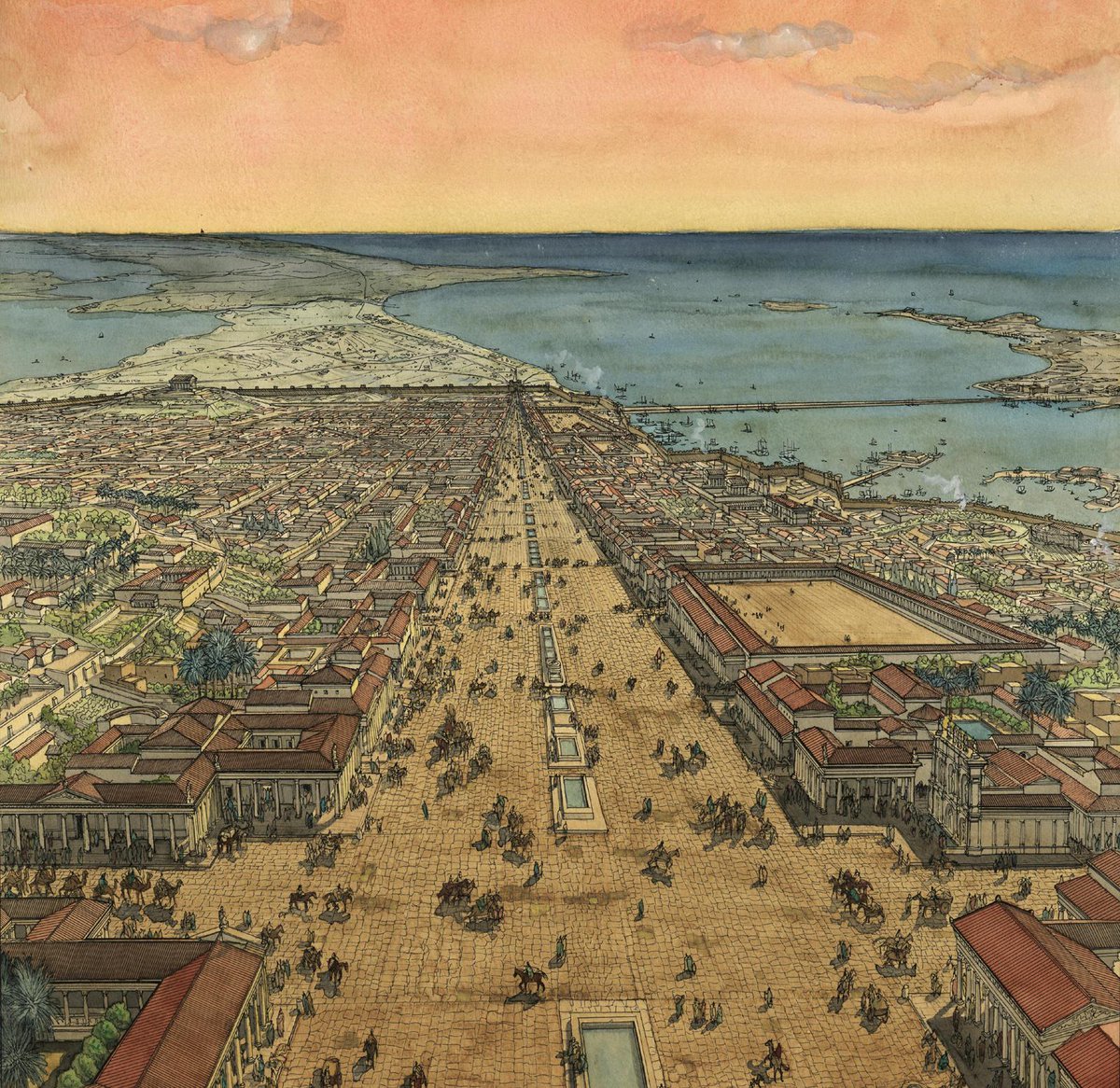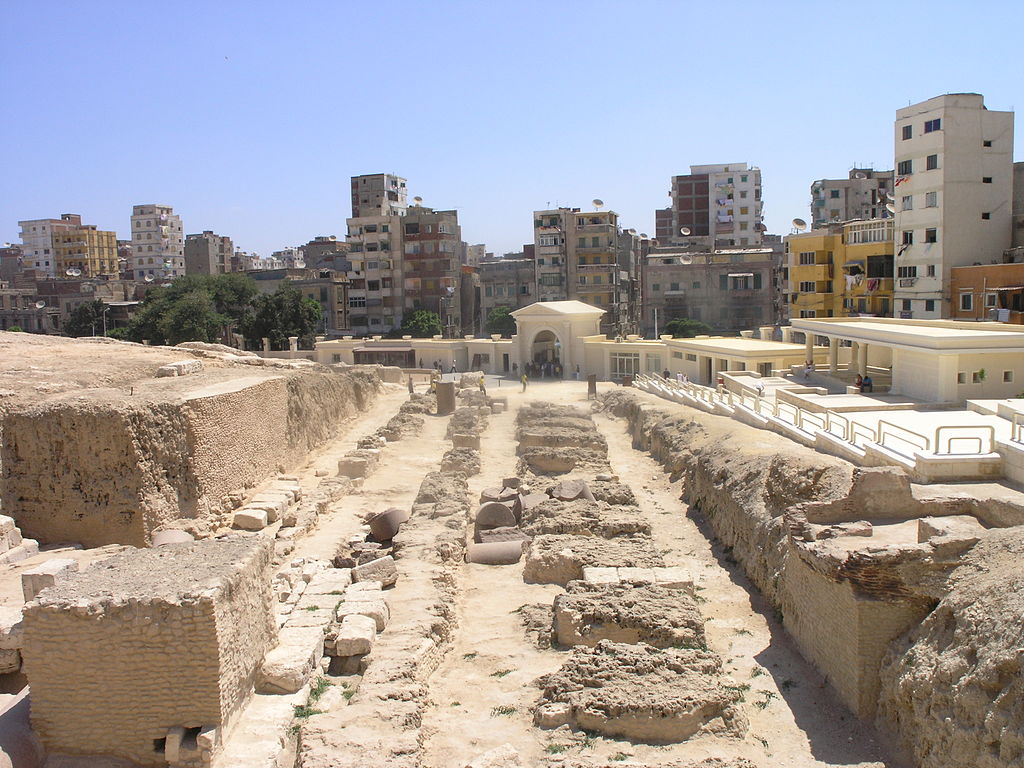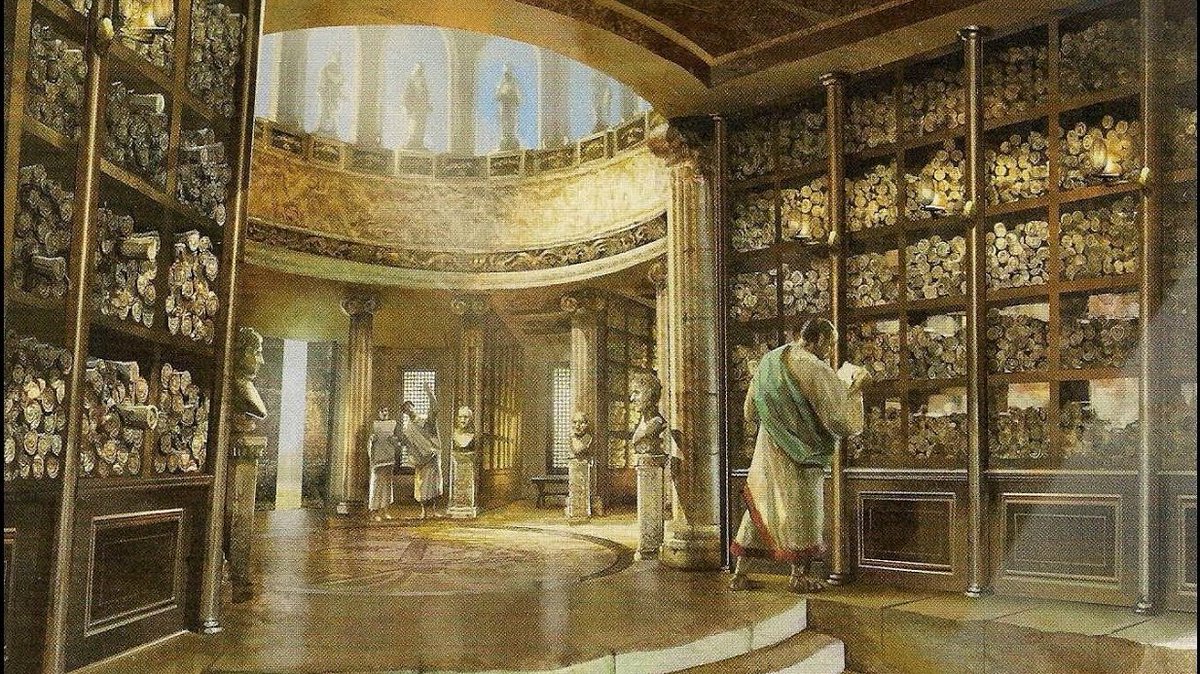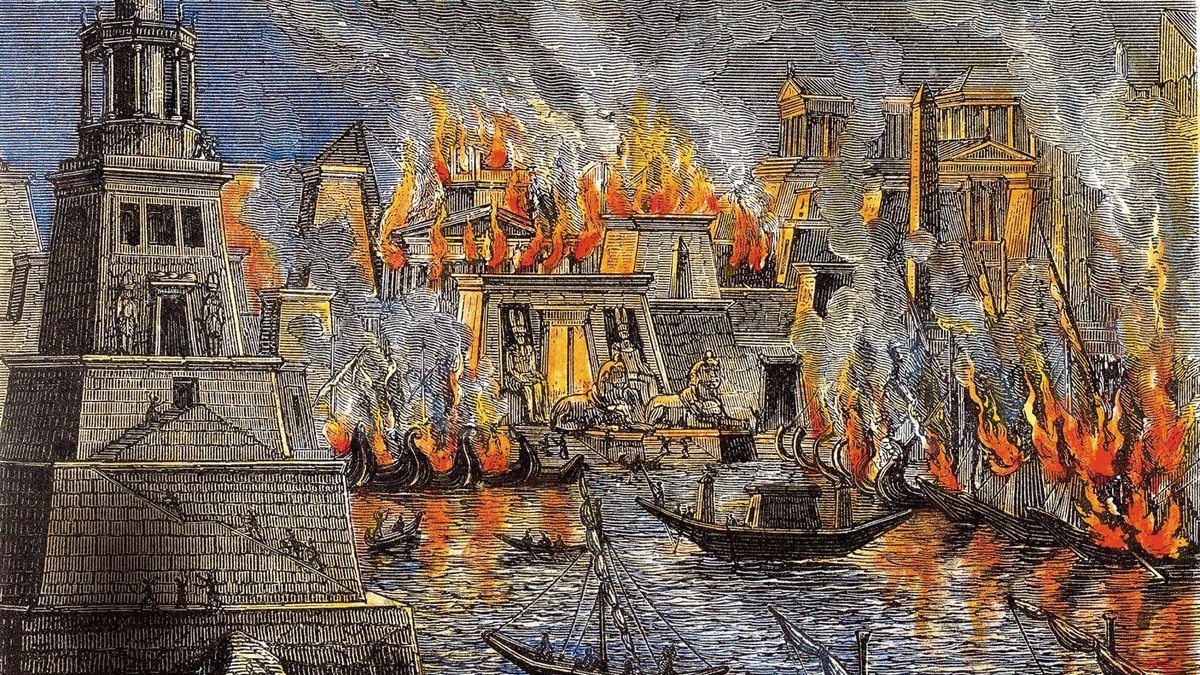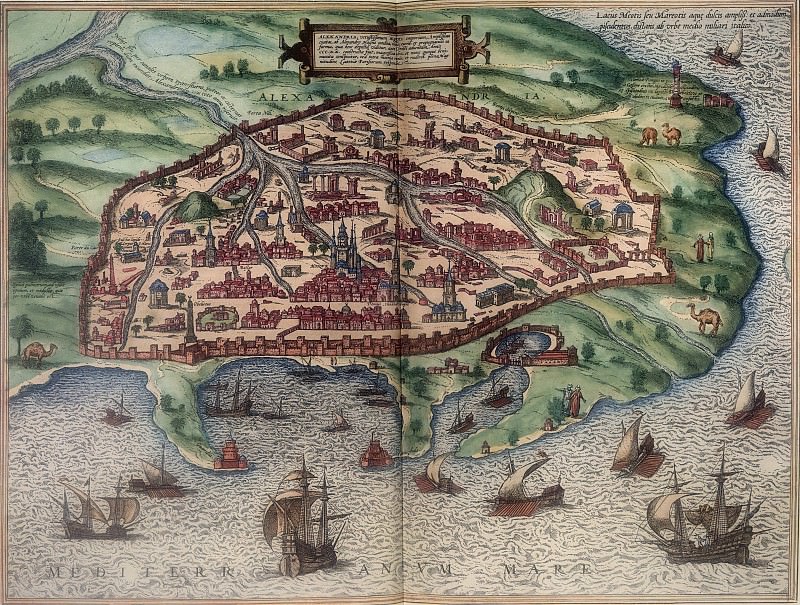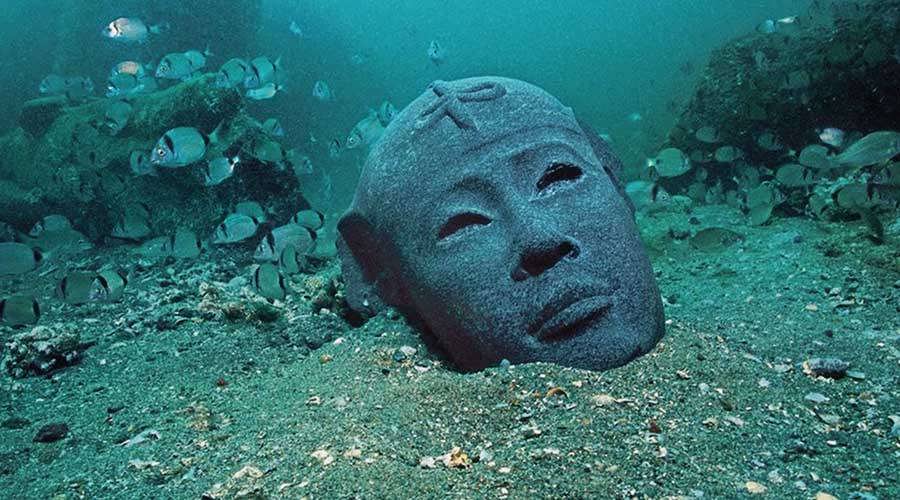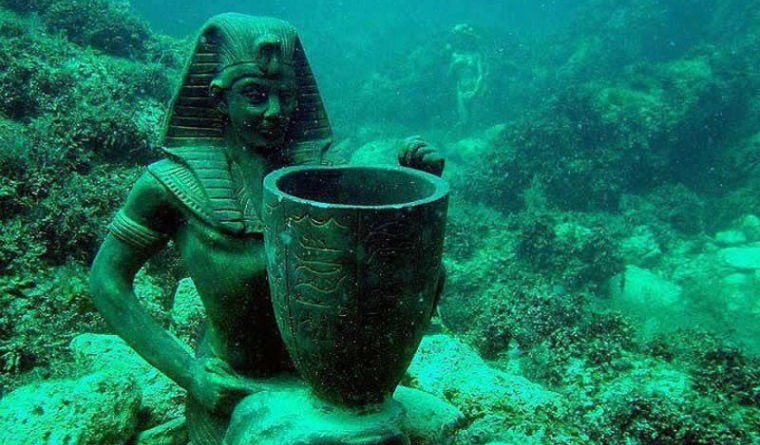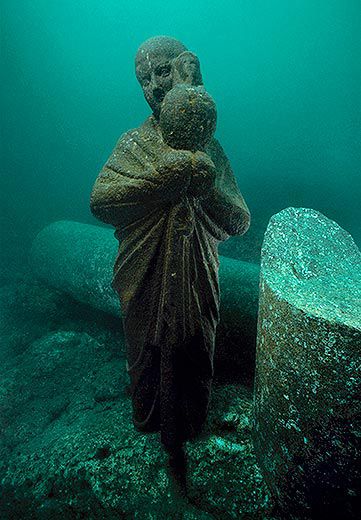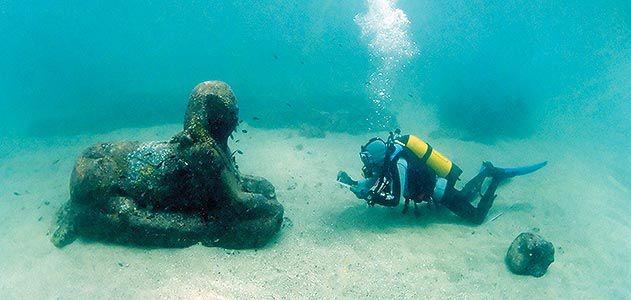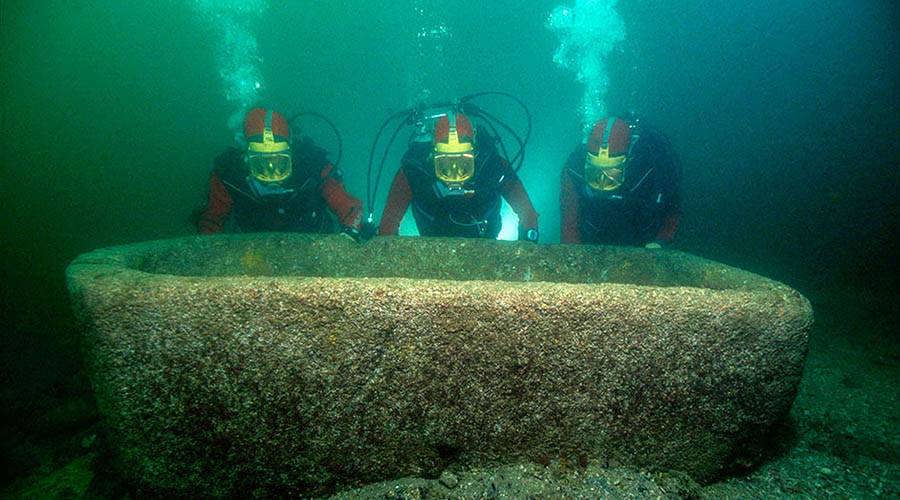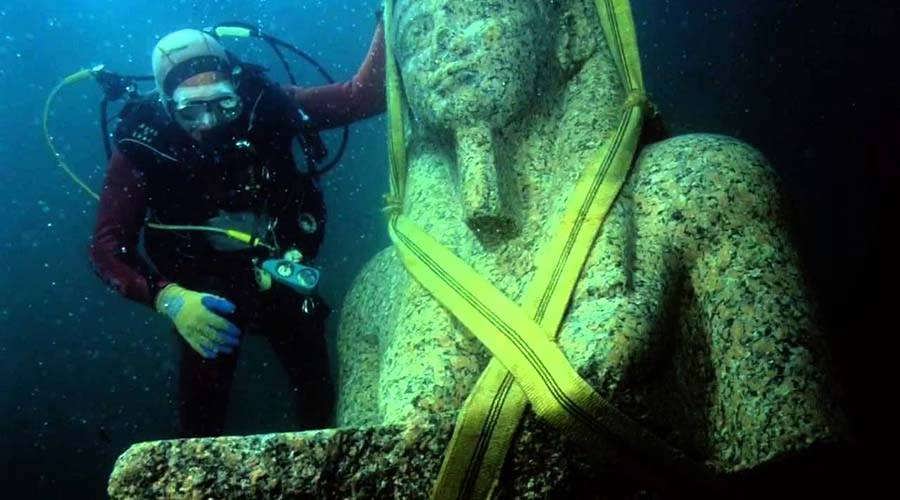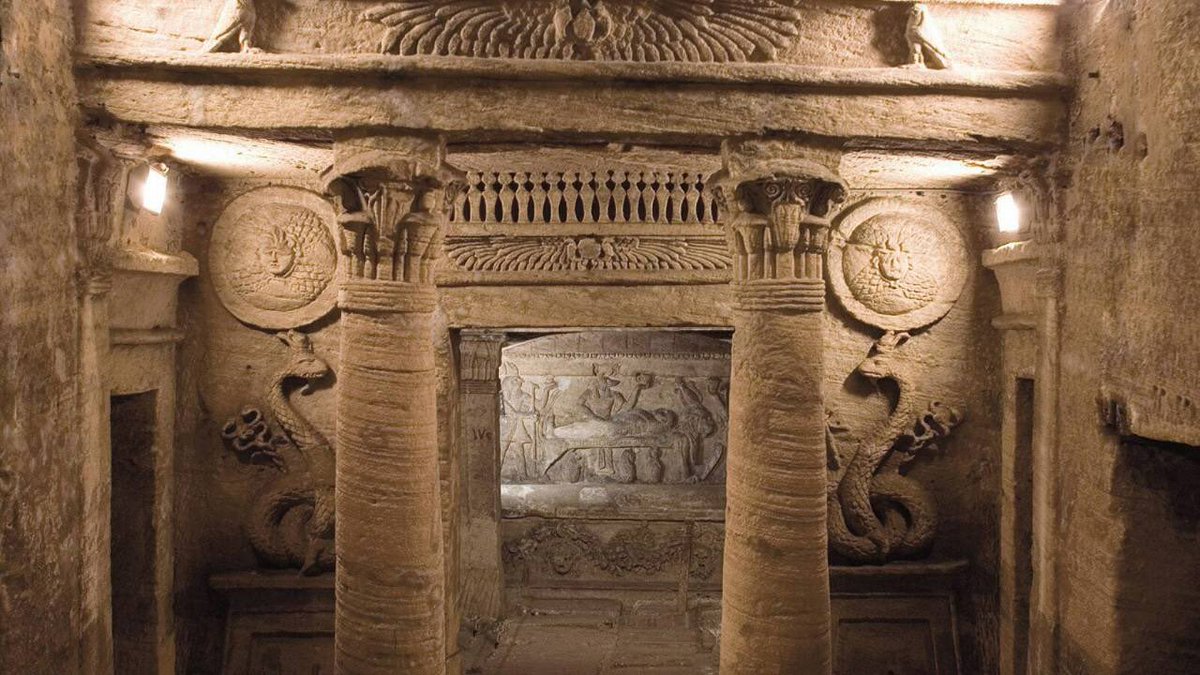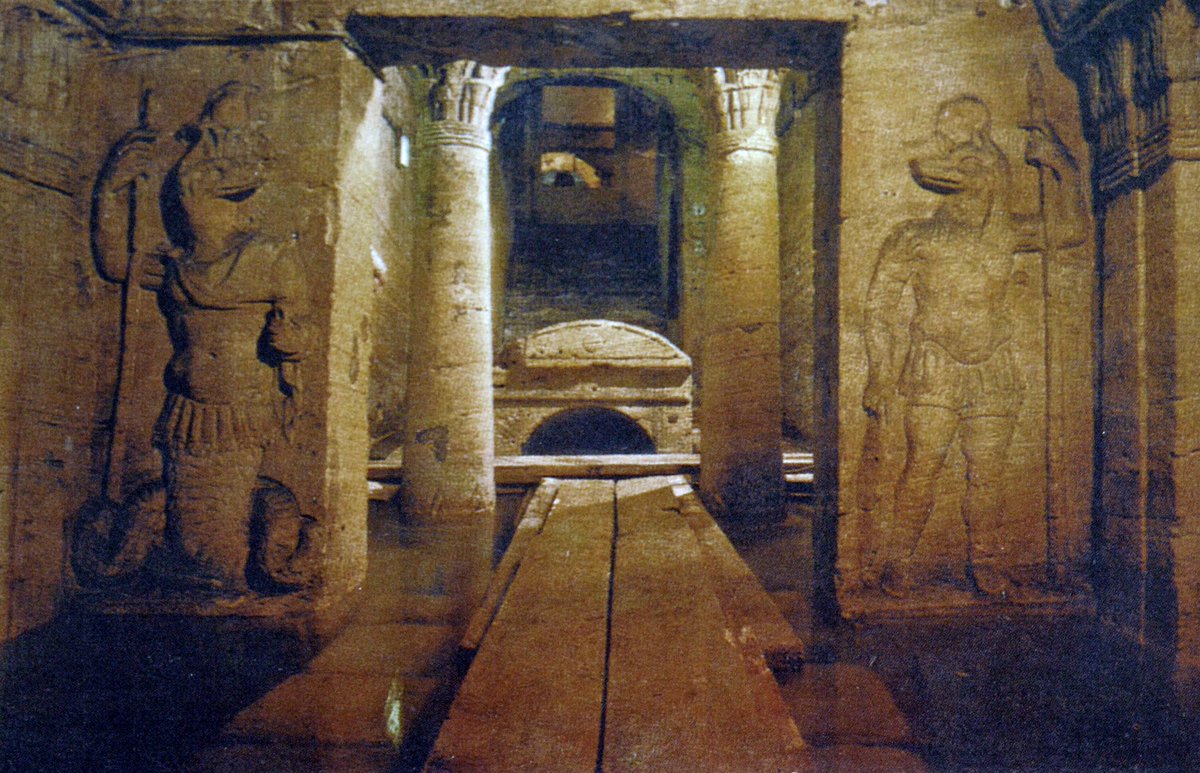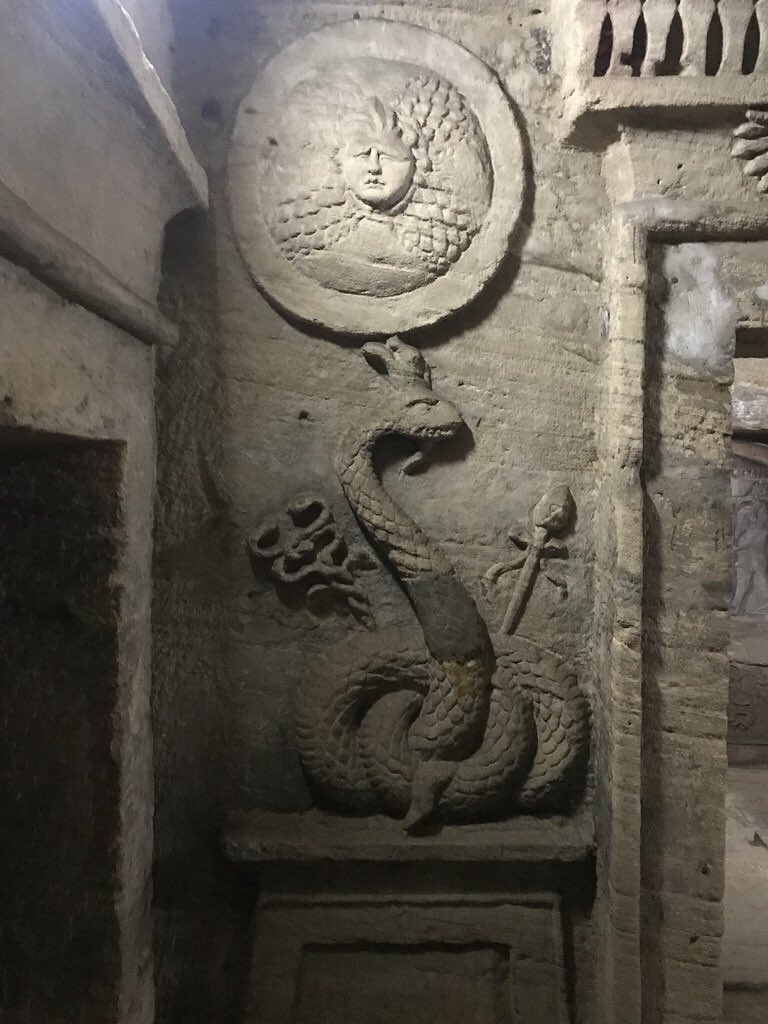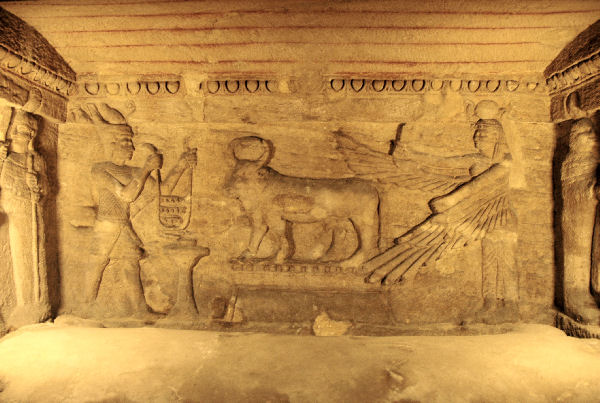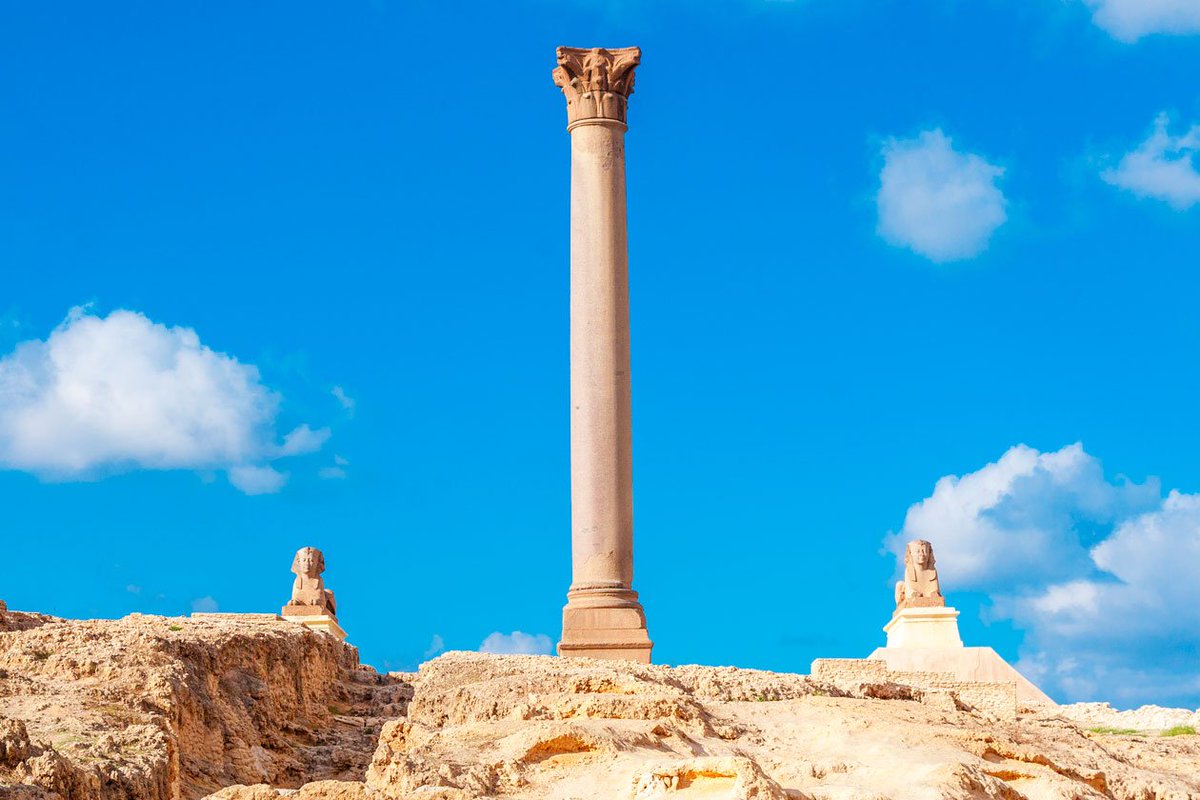Founded by Alexander the Great in 331 BC, Alexandria was one of the most prosperous cities in the ancient world.
It also became the leading cultural center of the world, home to people of different religions and different philosophies
*THREAD https://abs.twimg.com/emoji/v2/... draggable="false" alt="👇" title="Down pointing backhand index" aria-label="Emoji: Down pointing backhand index">
https://abs.twimg.com/emoji/v2/... draggable="false" alt="👇" title="Down pointing backhand index" aria-label="Emoji: Down pointing backhand index">
It also became the leading cultural center of the world, home to people of different religions and different philosophies
*THREAD
1. Alexandria was intended to be the Hellenistic center in Egypt, and to be the link between Greece and the rich Nile Valley
Thanks to its strategic location, it became a lucrative node in the trade network of the Mediterranean, attracting commerce from the east, north, and west
Thanks to its strategic location, it became a lucrative node in the trade network of the Mediterranean, attracting commerce from the east, north, and west
2. Alexandria& #39;s layout folowwed the Hellenistic model, with an orthogonal road network forming a regular grid.
Every detail was taken into account, including a grid direction that maximised the cooling effect of the prevailing north wind during summer& #39;s heat.
Every detail was taken into account, including a grid direction that maximised the cooling effect of the prevailing north wind during summer& #39;s heat.
3. So spacious were the arterial roads that chariots could circulate with ease
The Canopic Street was the principal thoroughfare of the city, running east and west through its centre. This area contained the Mausolea, the Museum & the Library, among other major public buildings
The Canopic Street was the principal thoroughfare of the city, running east and west through its centre. This area contained the Mausolea, the Museum & the Library, among other major public buildings
4. Considered one of the 7 wonders of the ancient world, the lighthouse of Alexandria (Pharos) guided ships into port at night.
For many centuries it was one of the tallest man-made structures in the world.
For many centuries it was one of the tallest man-made structures in the world.
5. Alexandria came to be regarded as the capital of knowledge and learning, in part because of the Mauseum.
Thanks to Ptolemic patronage, the top minds of the day could concentrate on their research without having to worry about going to war or how to feed themselves.
Thanks to Ptolemic patronage, the top minds of the day could concentrate on their research without having to worry about going to war or how to feed themselves.
The Great Library of Alexandria was one of the most significant ancient libraries in the world.
The library became the center of Hellenistic literature and literary life. Many ancient texts still survive to this day because they were collected, preserved, and stored there.
The library became the center of Hellenistic literature and literary life. Many ancient texts still survive to this day because they were collected, preserved, and stored there.
7. It was previously believed that Cesar was responsible for the destruction of the library.
However, only a portion of the library was destroyed by him accidentally. It was not until sometime around 400 a.C. that it is believed to have been fully destroyed.
However, only a portion of the library was destroyed by him accidentally. It was not until sometime around 400 a.C. that it is believed to have been fully destroyed.
8. In the 4th century Alexandria became steadily impoverished, both financially and culturally.
At the same time, it became increasingly a battlefield for warring faiths. Pagan temples and statues were destroyed.
At the same time, it became increasingly a battlefield for warring faiths. Pagan temples and statues were destroyed.
9. By the 16th century, when this map was produced, Alexandria had ben toppled by earthquakes, deluged by tidal waves and depopulated by plague.
The city& #39;s few citizens livend among the ancient ruins.
The city& #39;s few citizens livend among the ancient ruins.
10. Due to a combination of natural phenomena, parts of Alexandia’s ancient coastline sank beneath the sea.
For more than 1,200 years temples, palaces, statues, coins and every day objects lay untouched on the seabed.
For more than 1,200 years temples, palaces, statues, coins and every day objects lay untouched on the seabed.
11. In 1992, Frank Goddio’s team of archaeologists investigated a portion of Egypt’s Bay of Alexandria where he discovered, mapped, and excavated the ancient Great Port of Alexandria.
12. As an example of Alexandria’s hallmark fusion of Pharaonic and Greco-Roman styles, the catacombs of Kom El-Shoqafa is a huge necropolis that dates back to the second century AD.

 Read on Twitter
Read on Twitter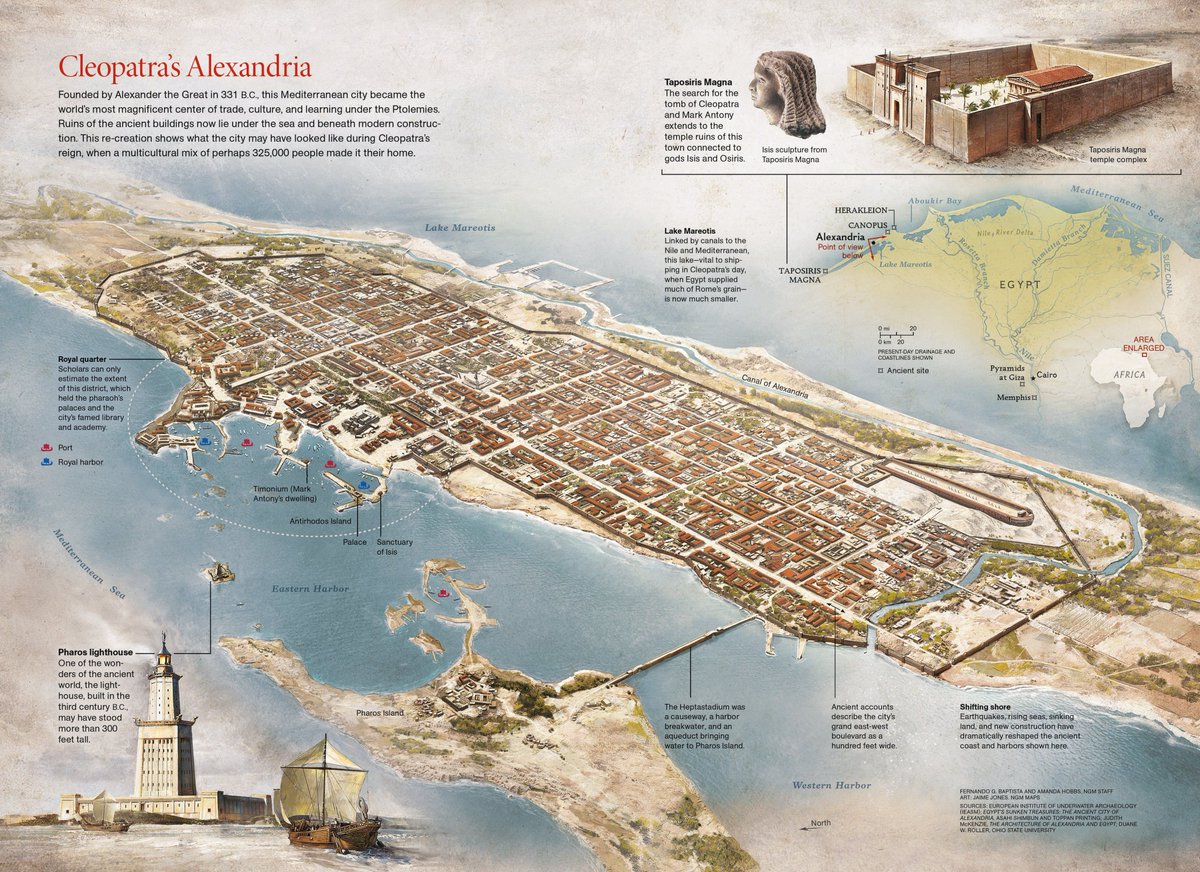 " title="Founded by Alexander the Great in 331 BC, Alexandria was one of the most prosperous cities in the ancient world. It also became the leading cultural center of the world, home to people of different religions and different philosophies*THREADhttps://abs.twimg.com/emoji/v2/... draggable="false" alt="👇" title="Down pointing backhand index" aria-label="Emoji: Down pointing backhand index">" class="img-responsive" style="max-width:100%;"/>
" title="Founded by Alexander the Great in 331 BC, Alexandria was one of the most prosperous cities in the ancient world. It also became the leading cultural center of the world, home to people of different religions and different philosophies*THREADhttps://abs.twimg.com/emoji/v2/... draggable="false" alt="👇" title="Down pointing backhand index" aria-label="Emoji: Down pointing backhand index">" class="img-responsive" style="max-width:100%;"/>
